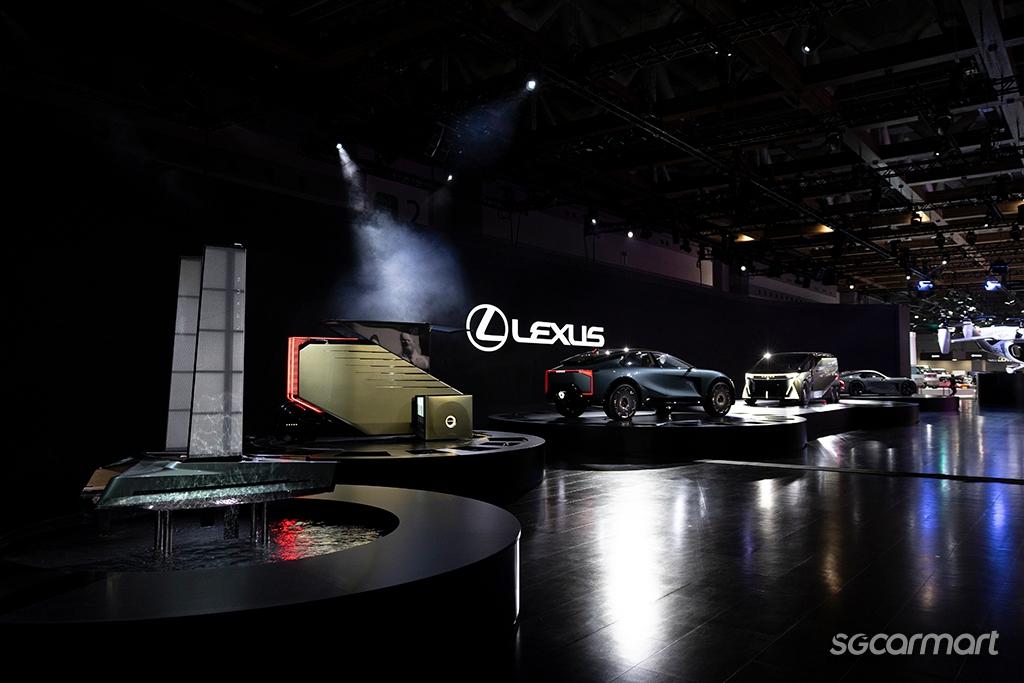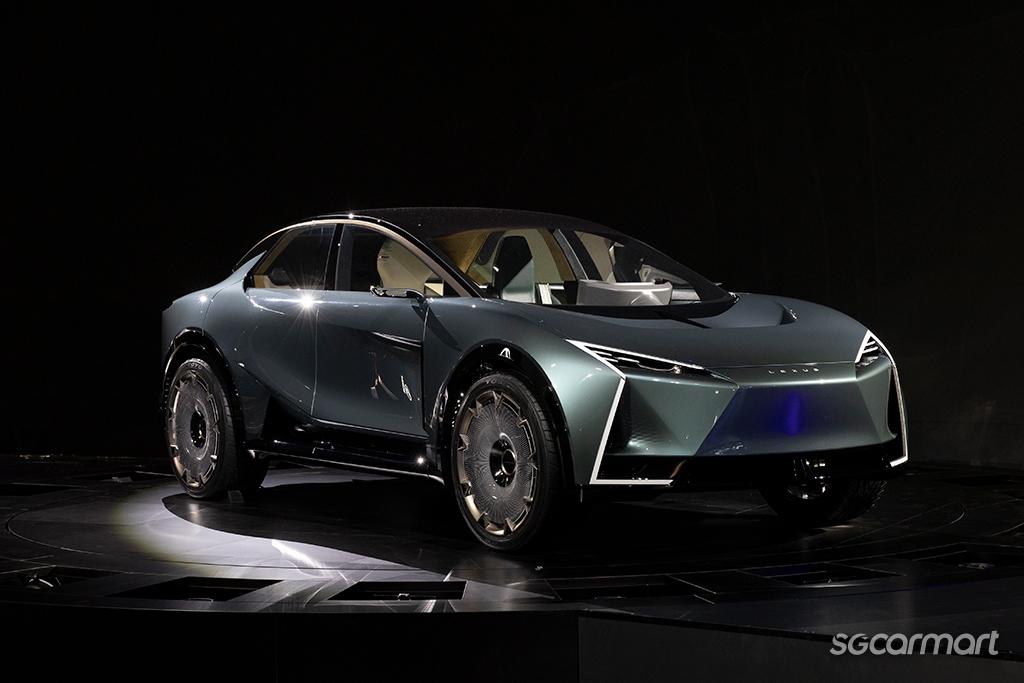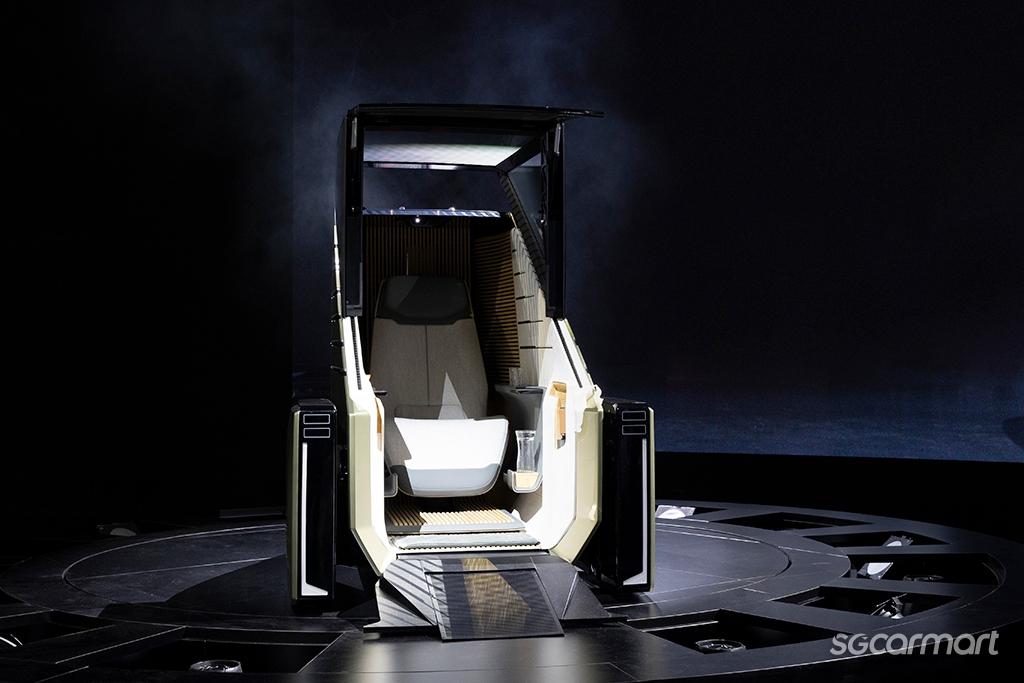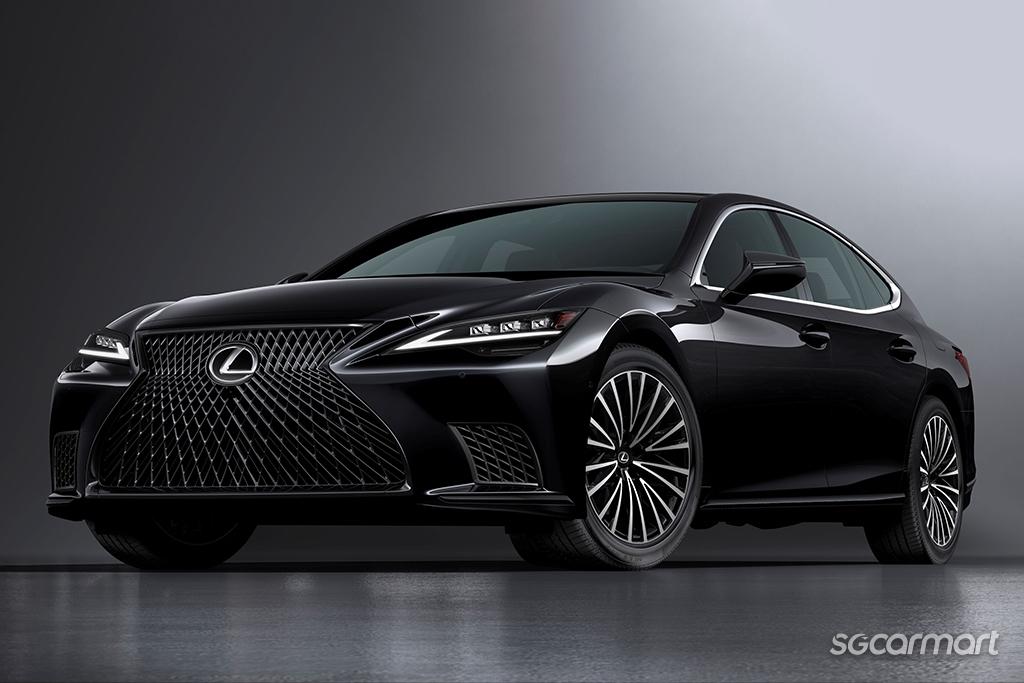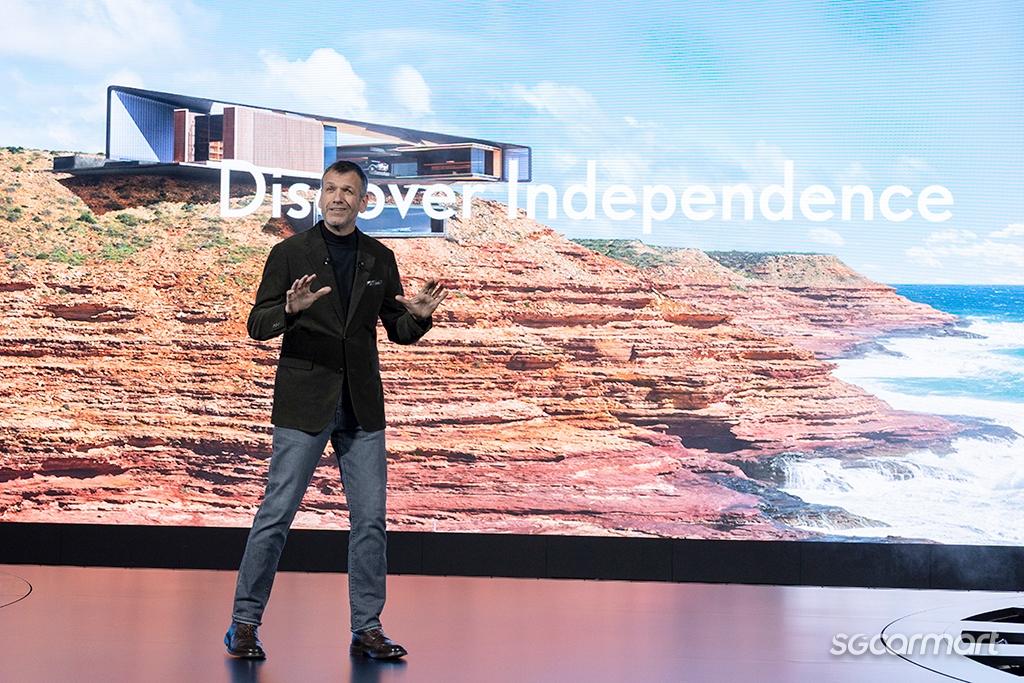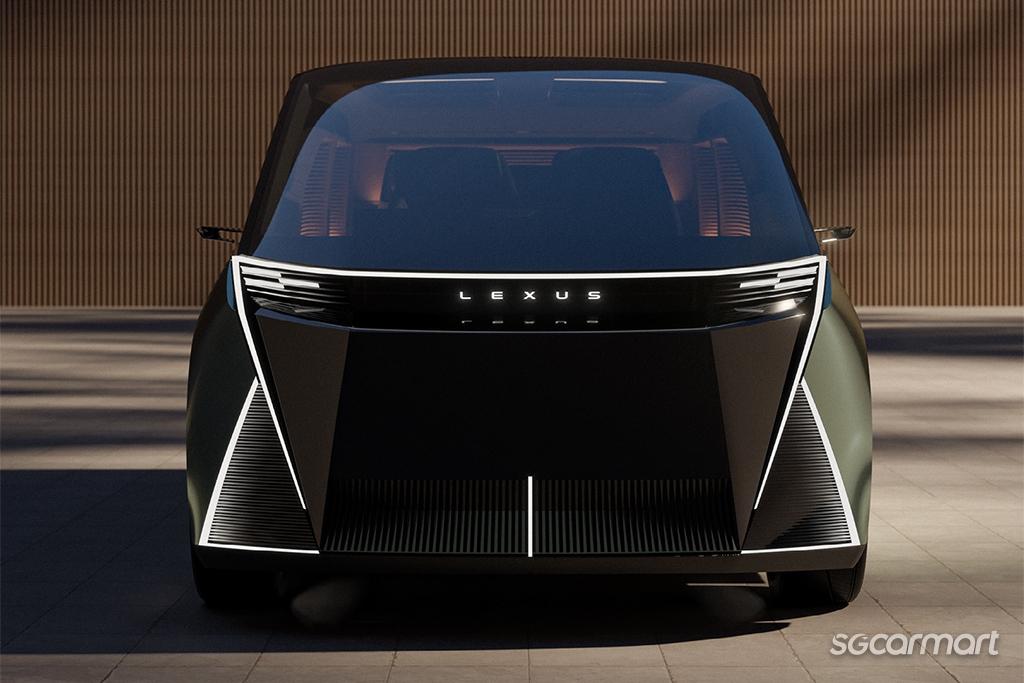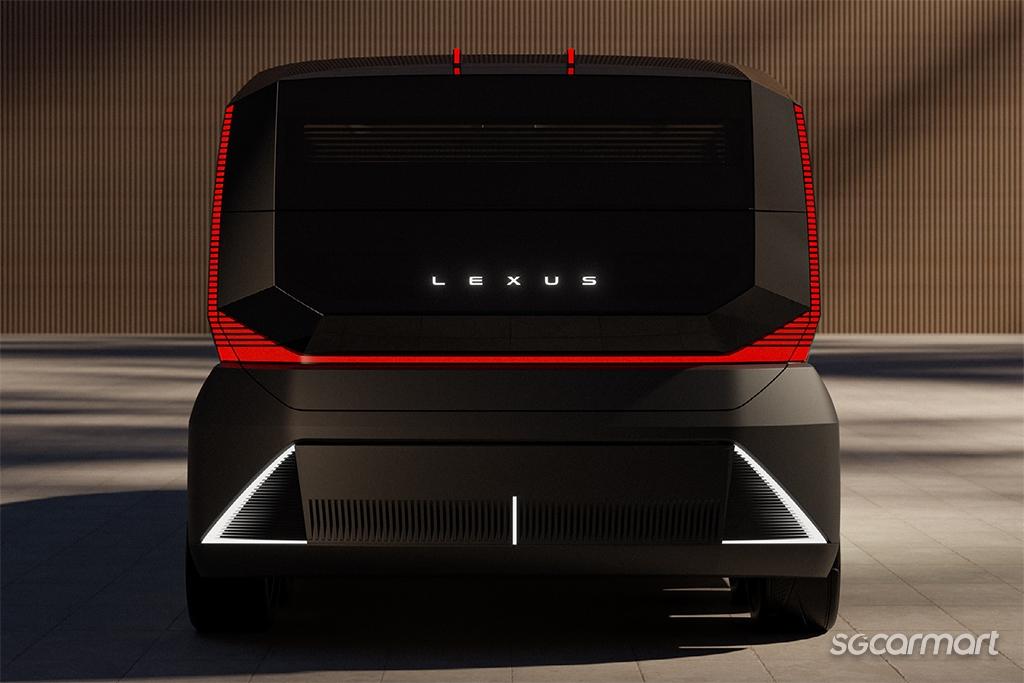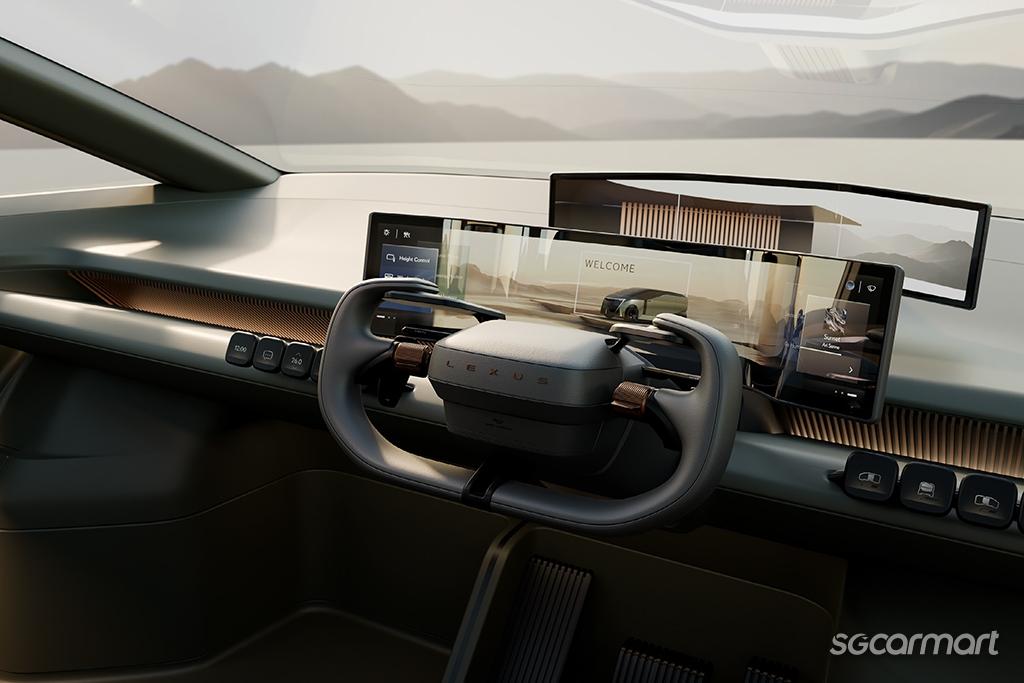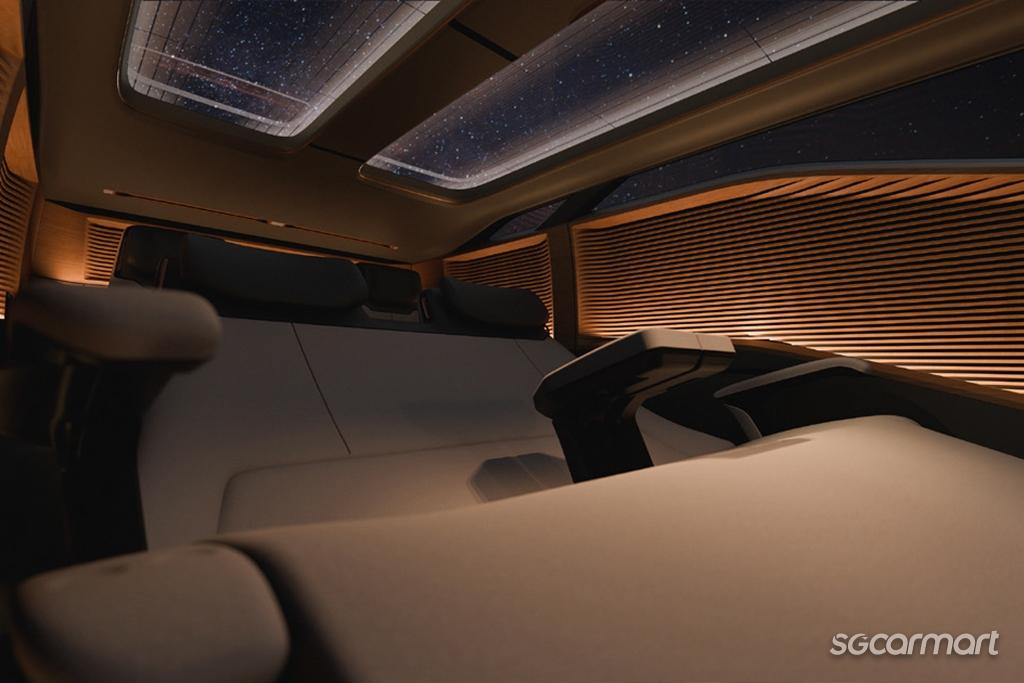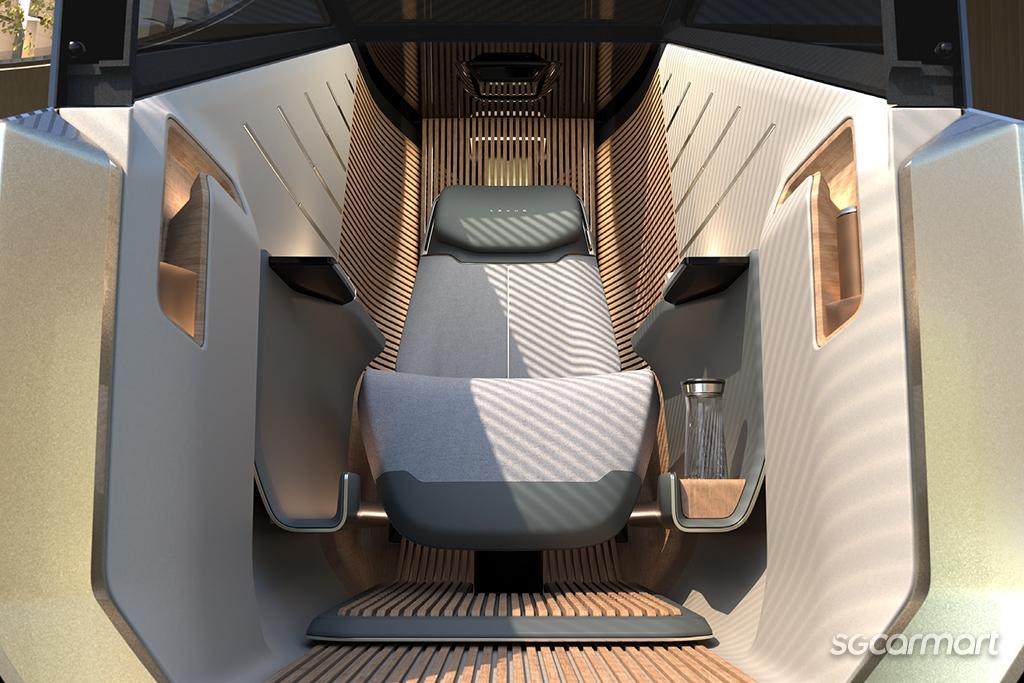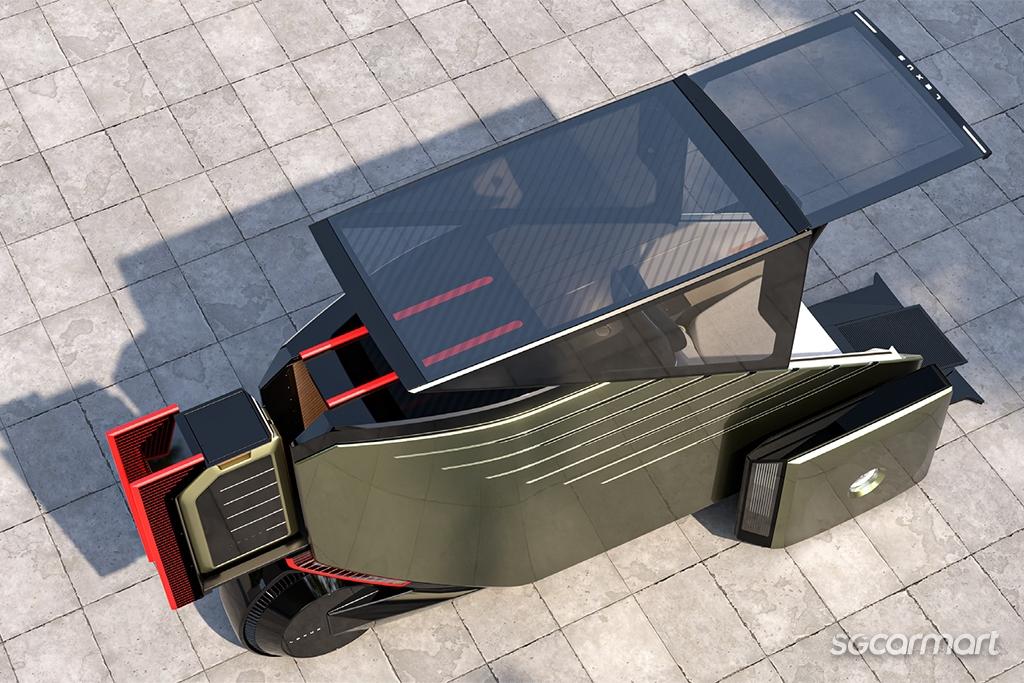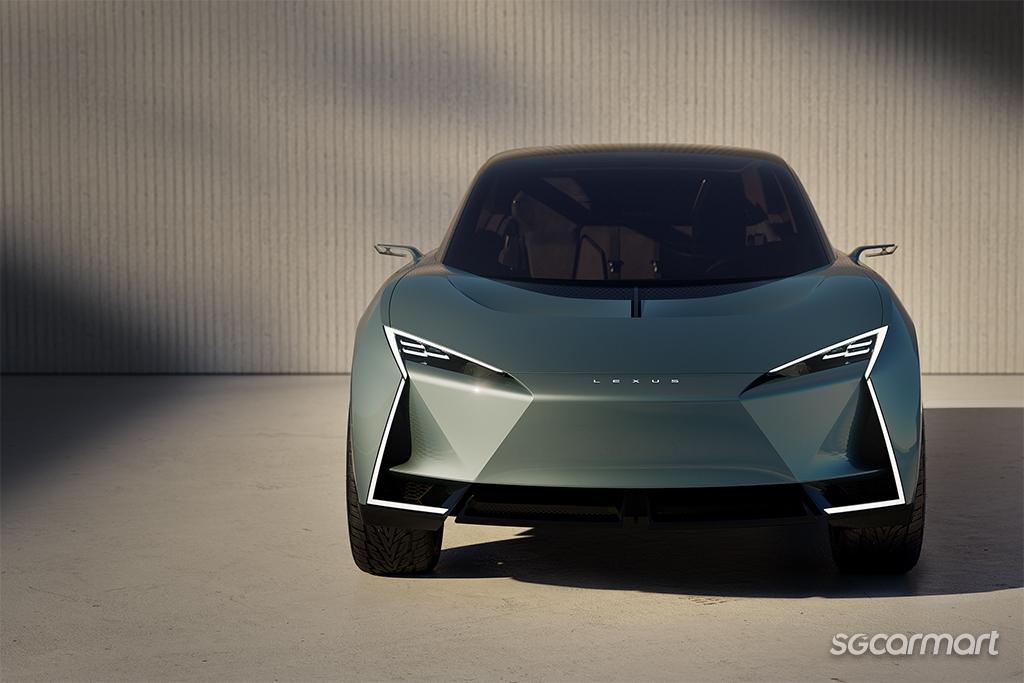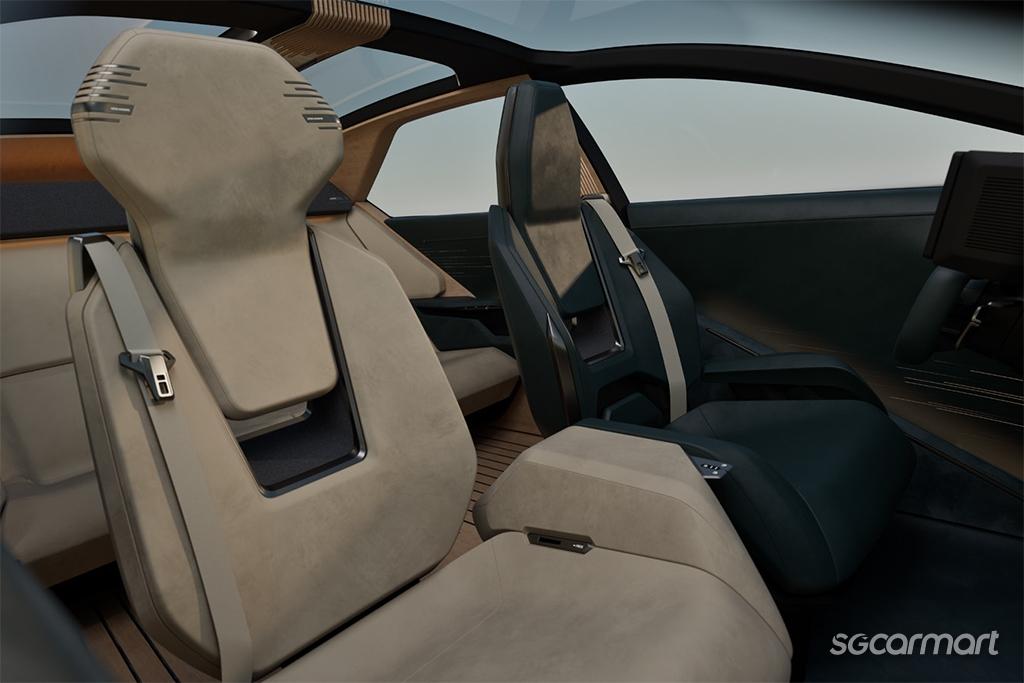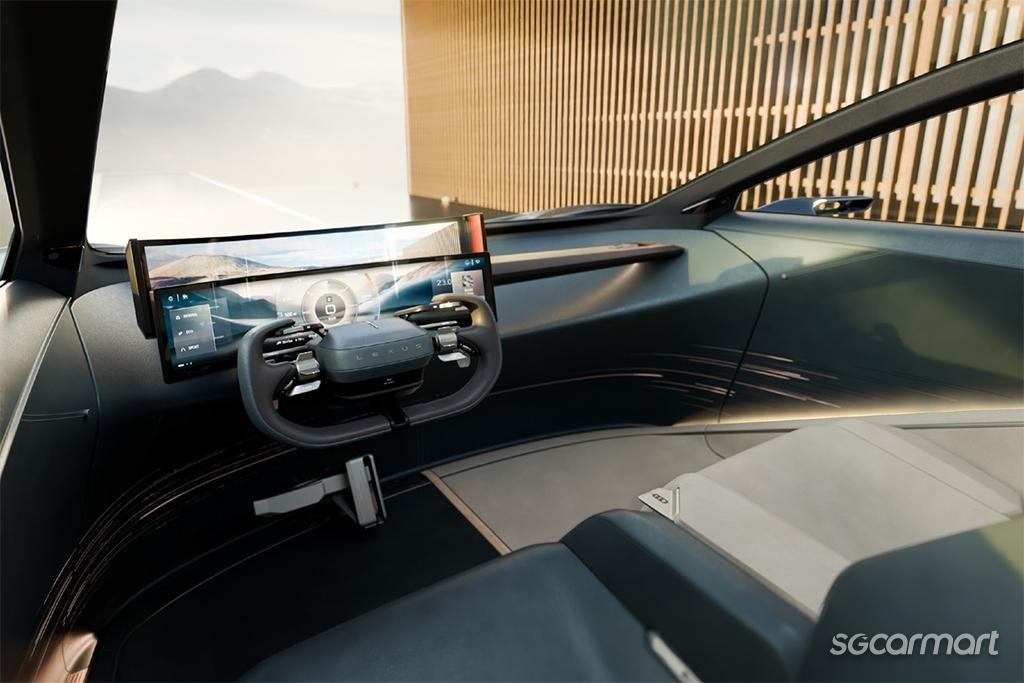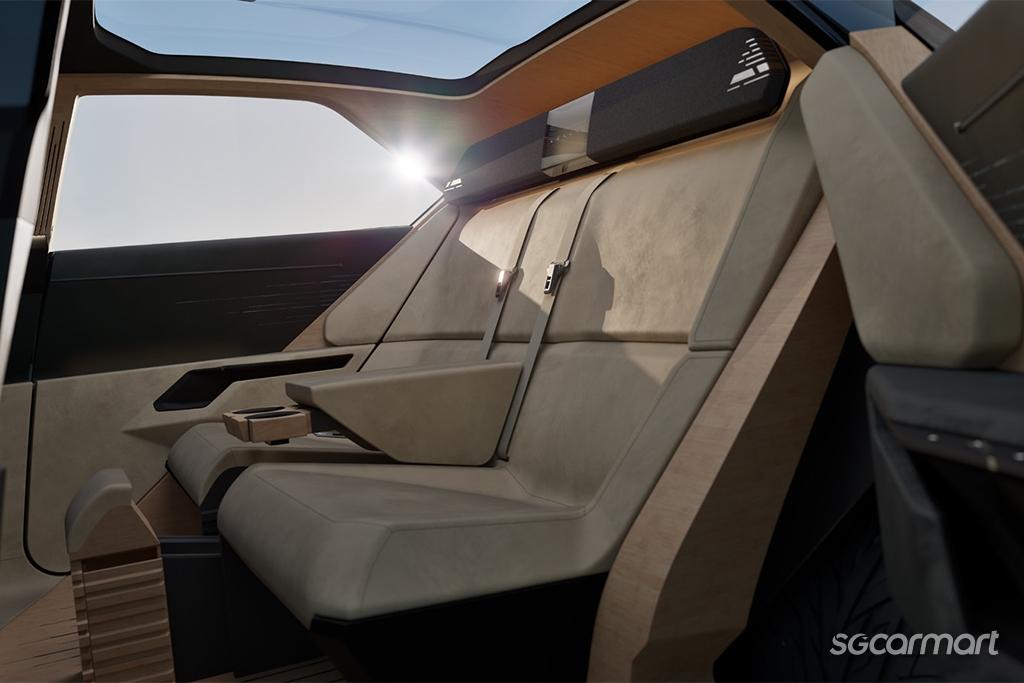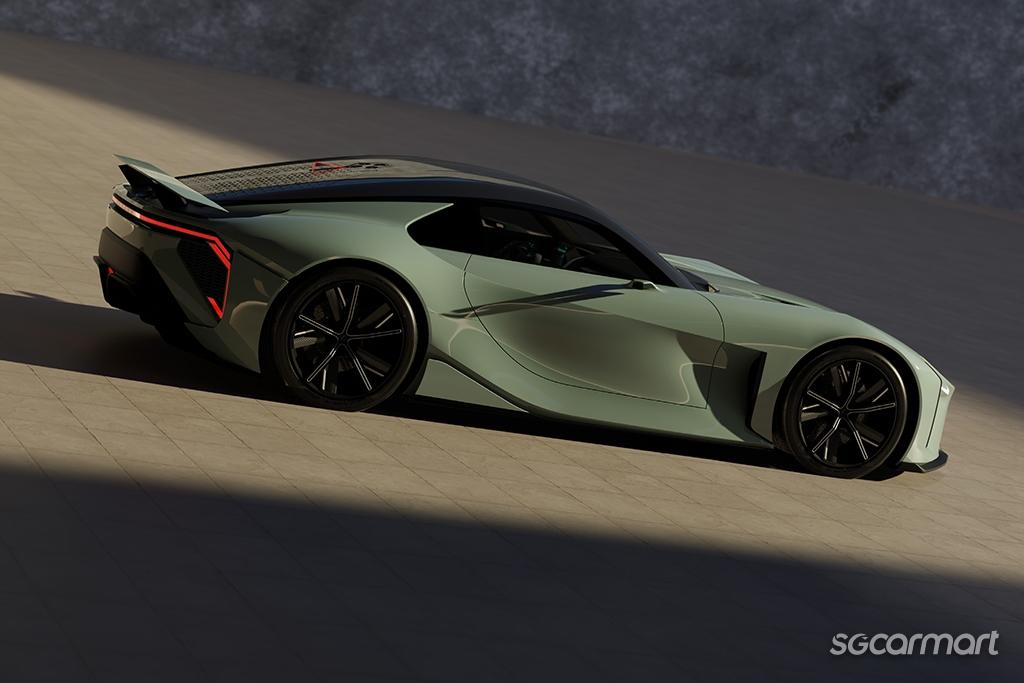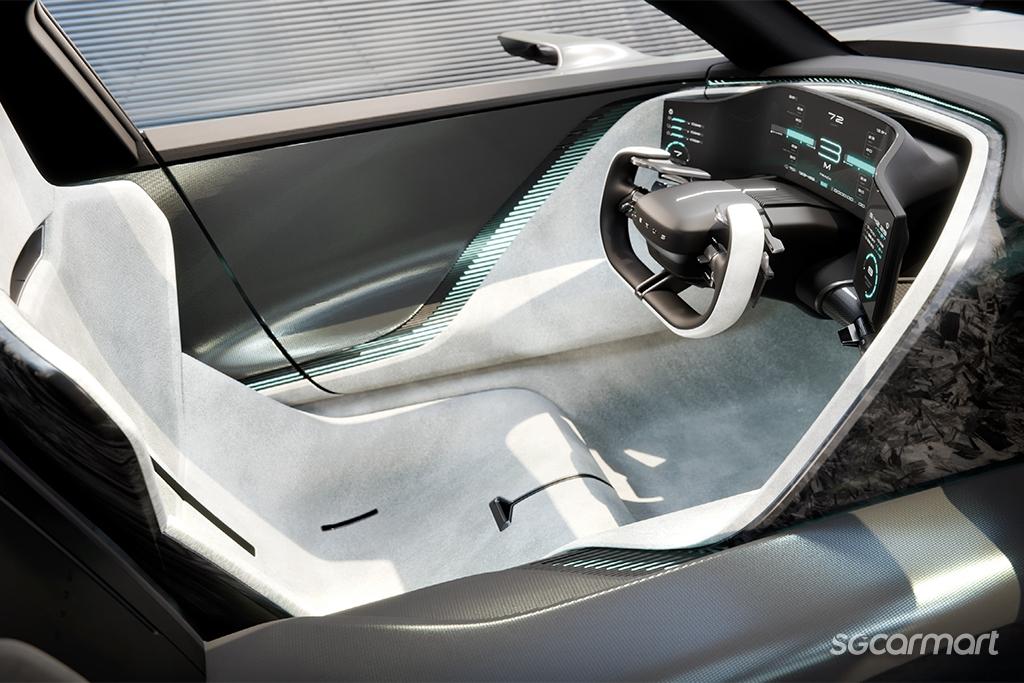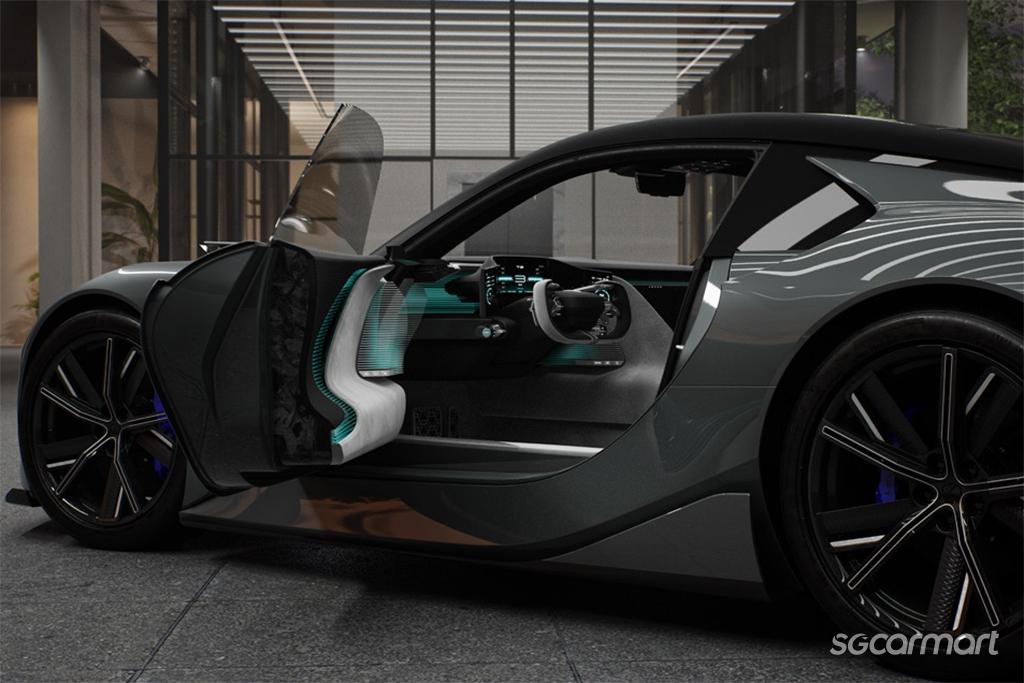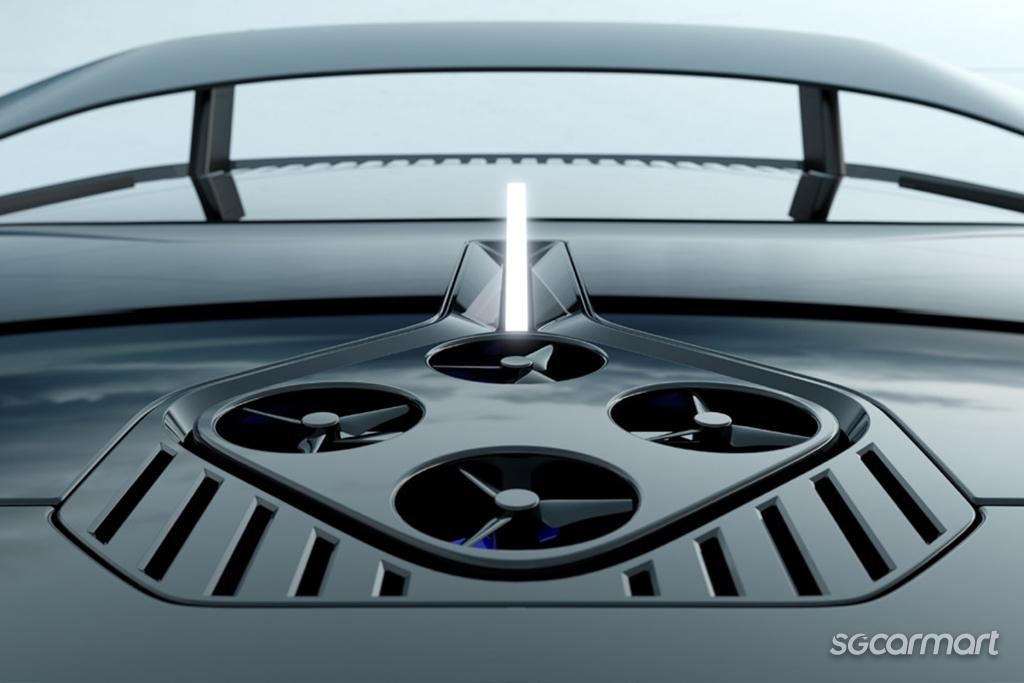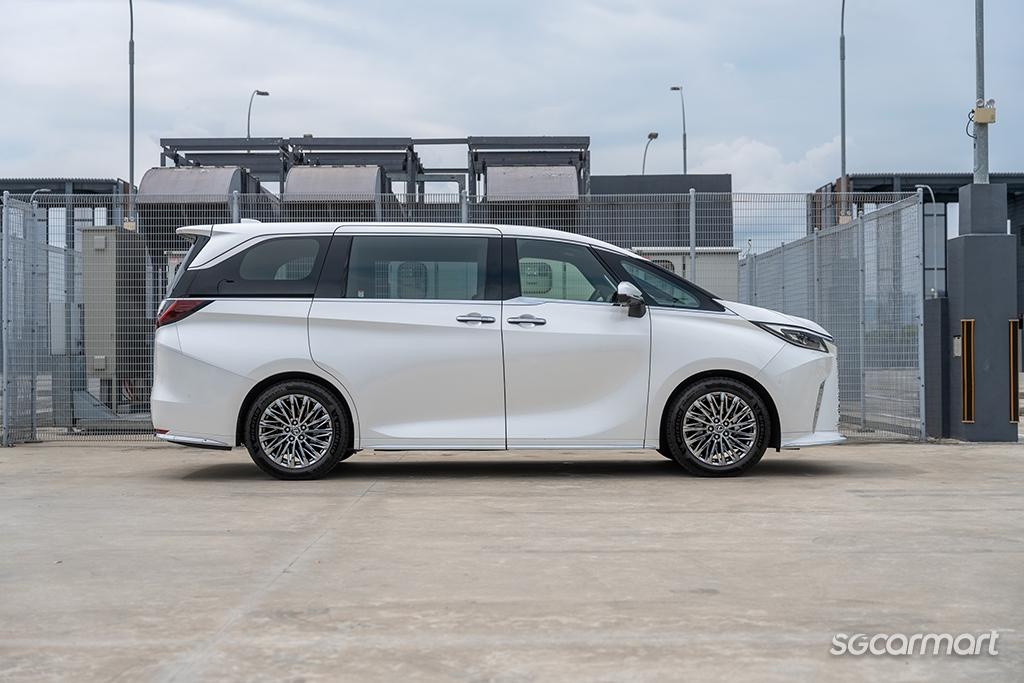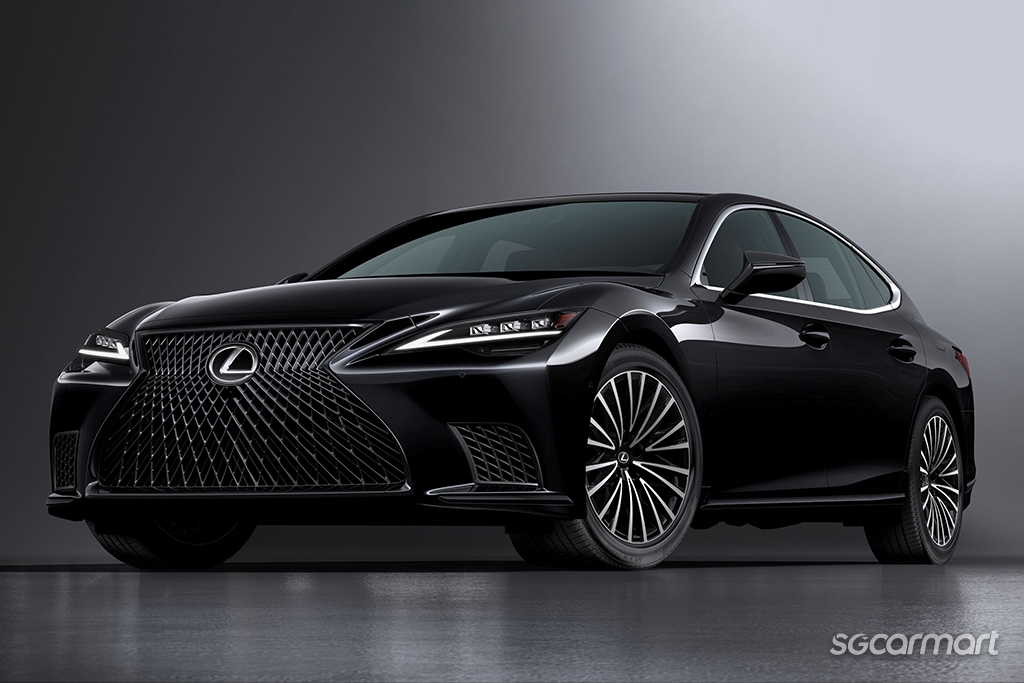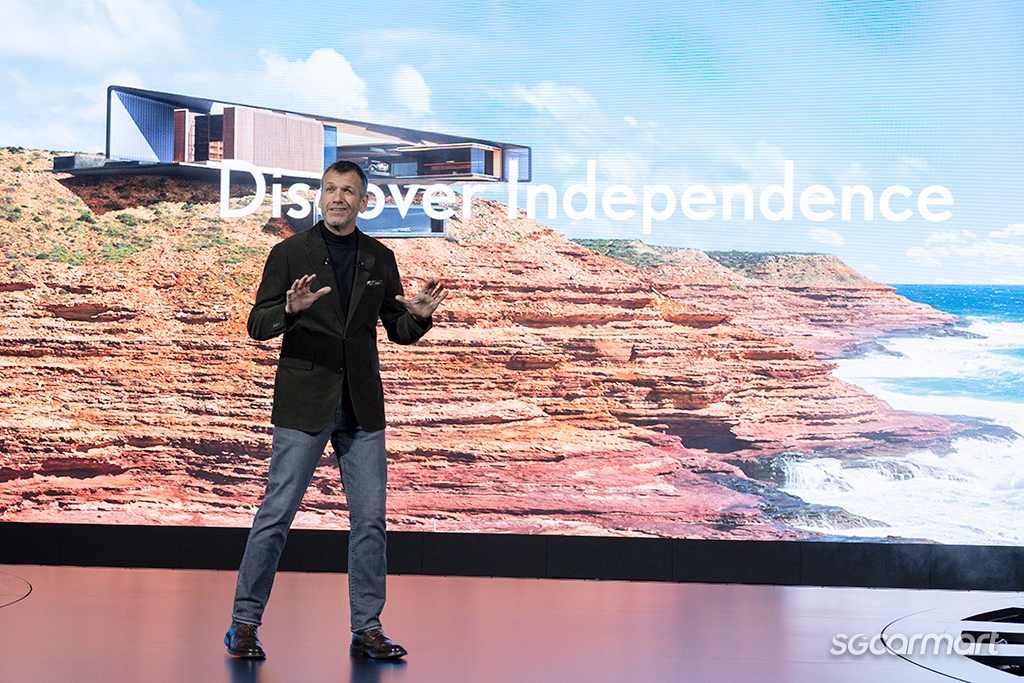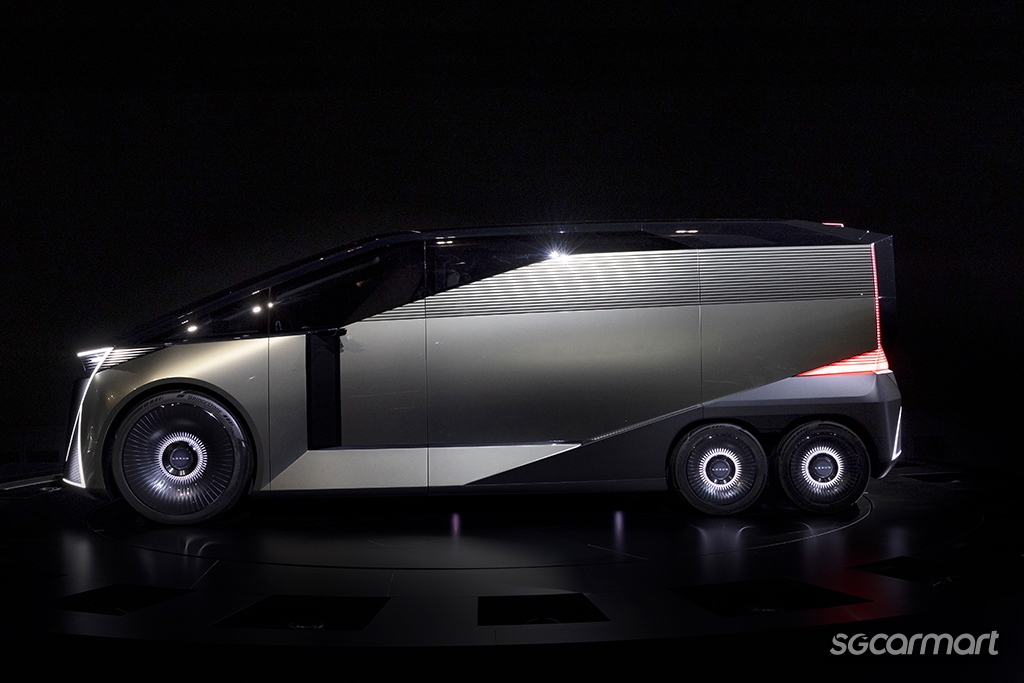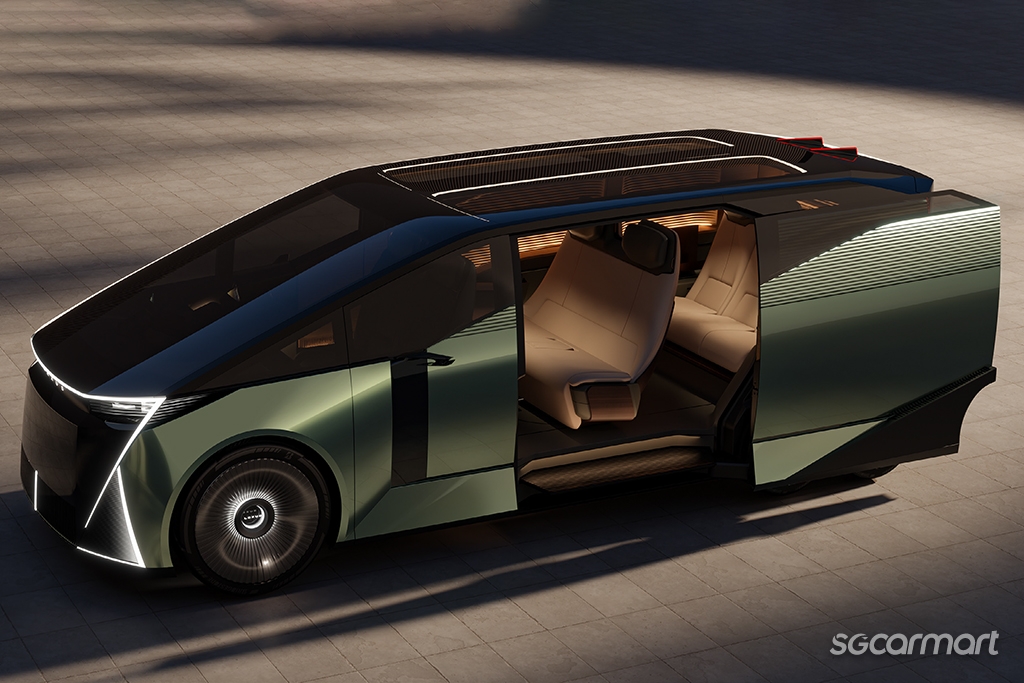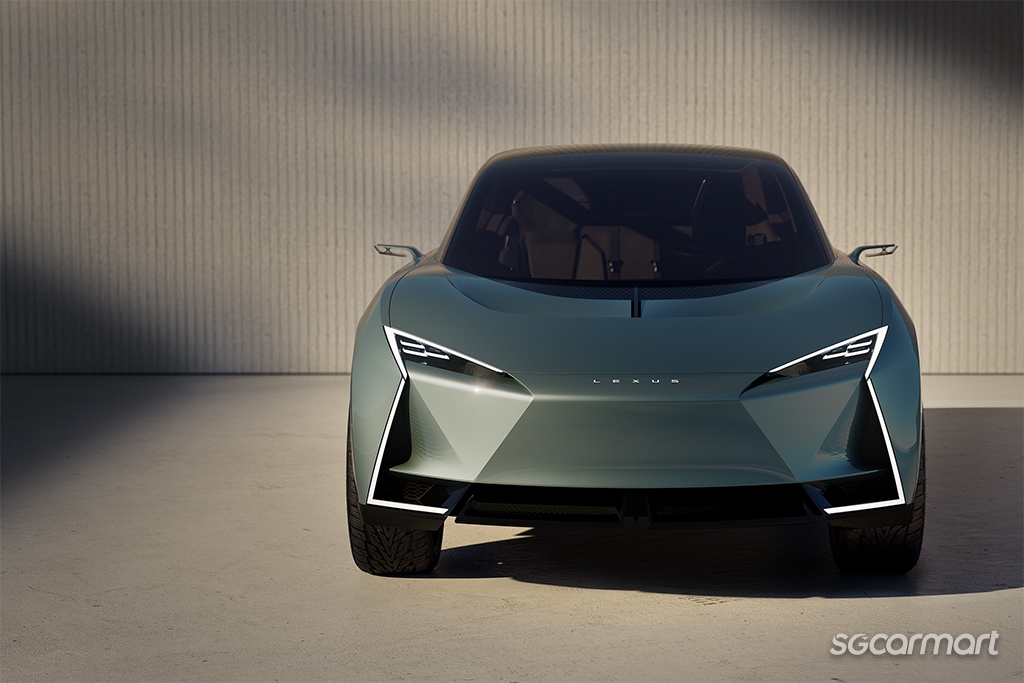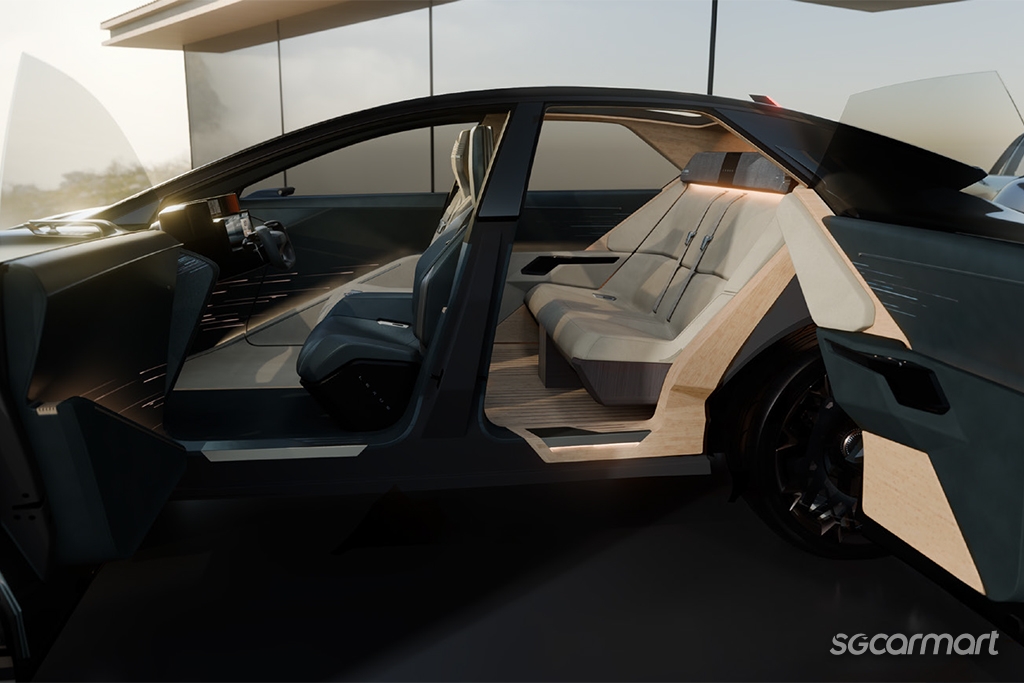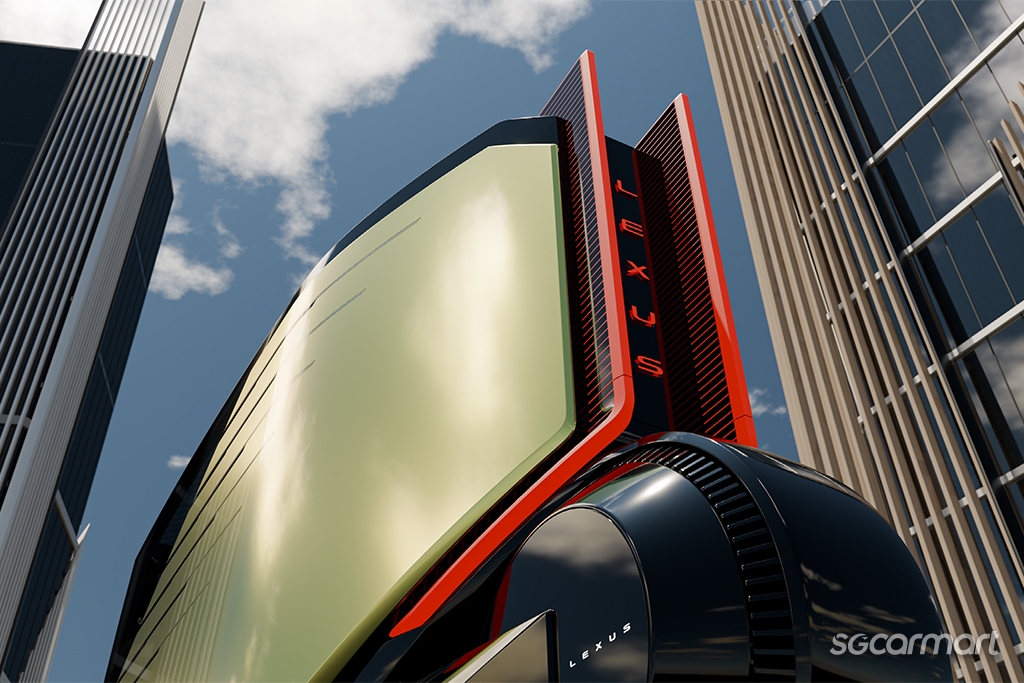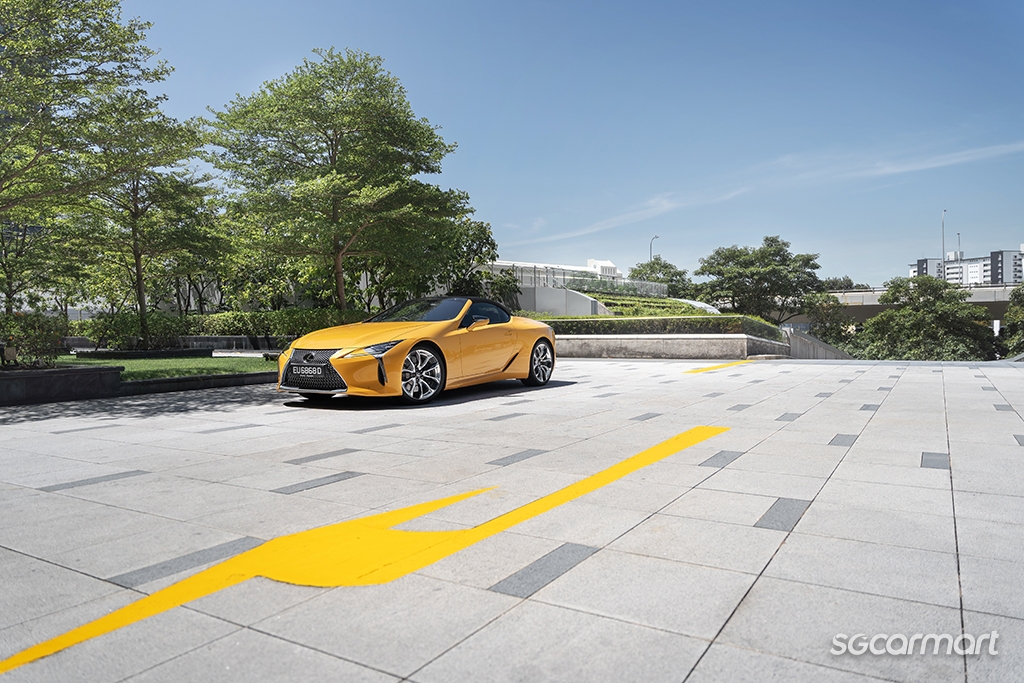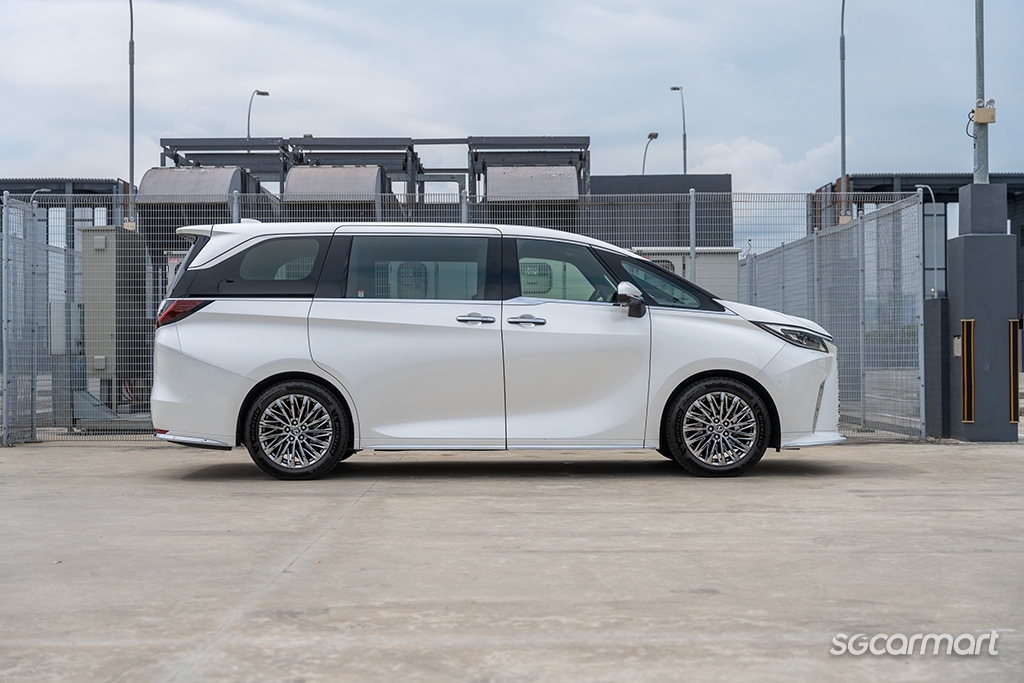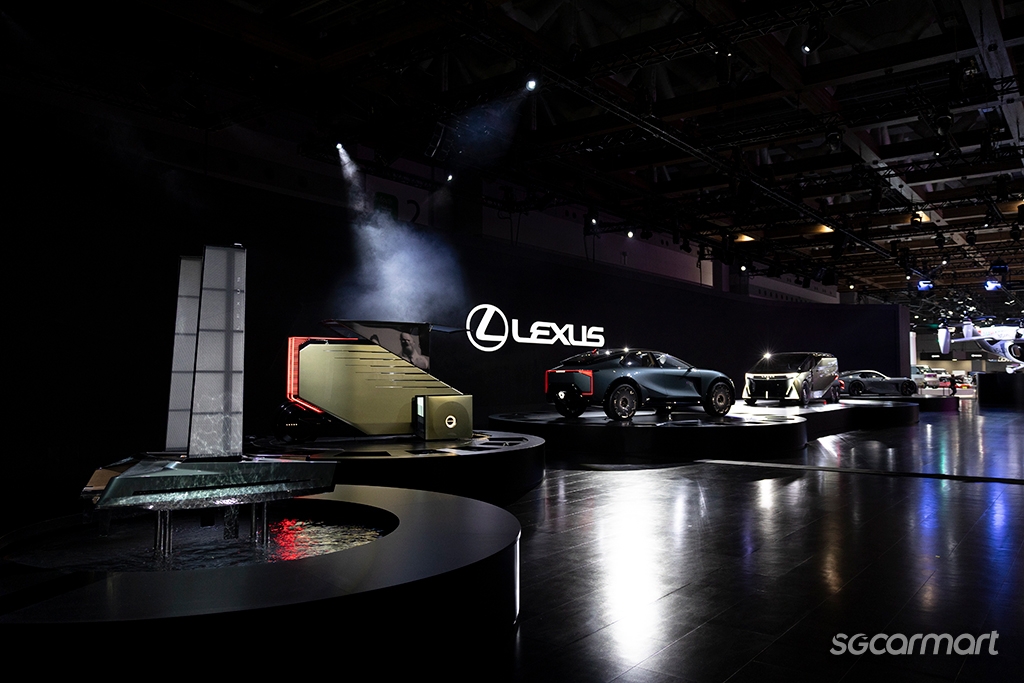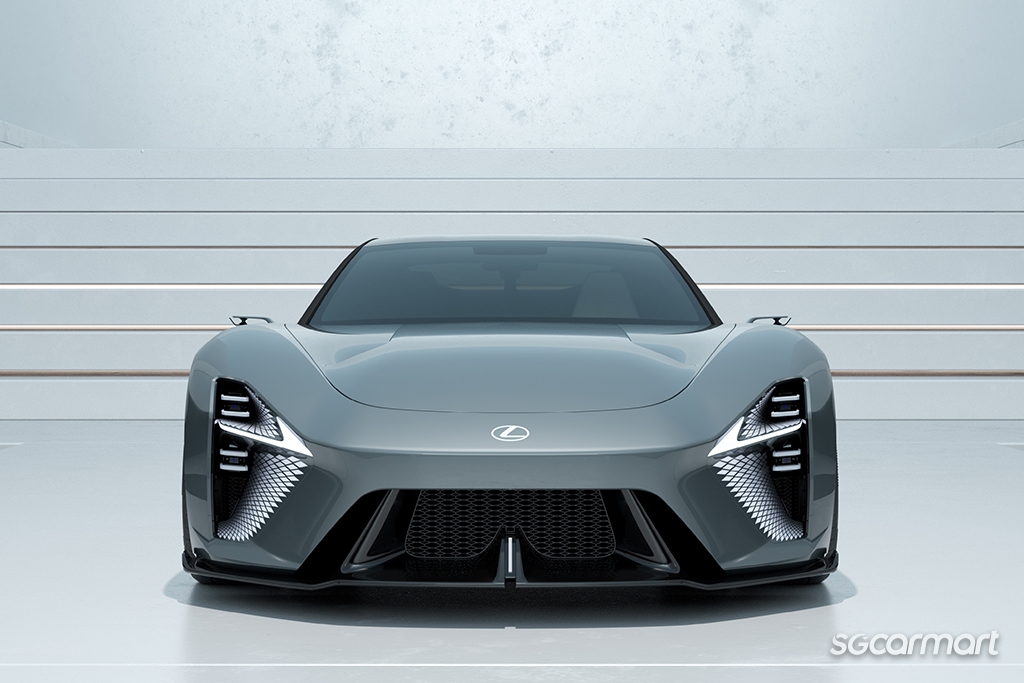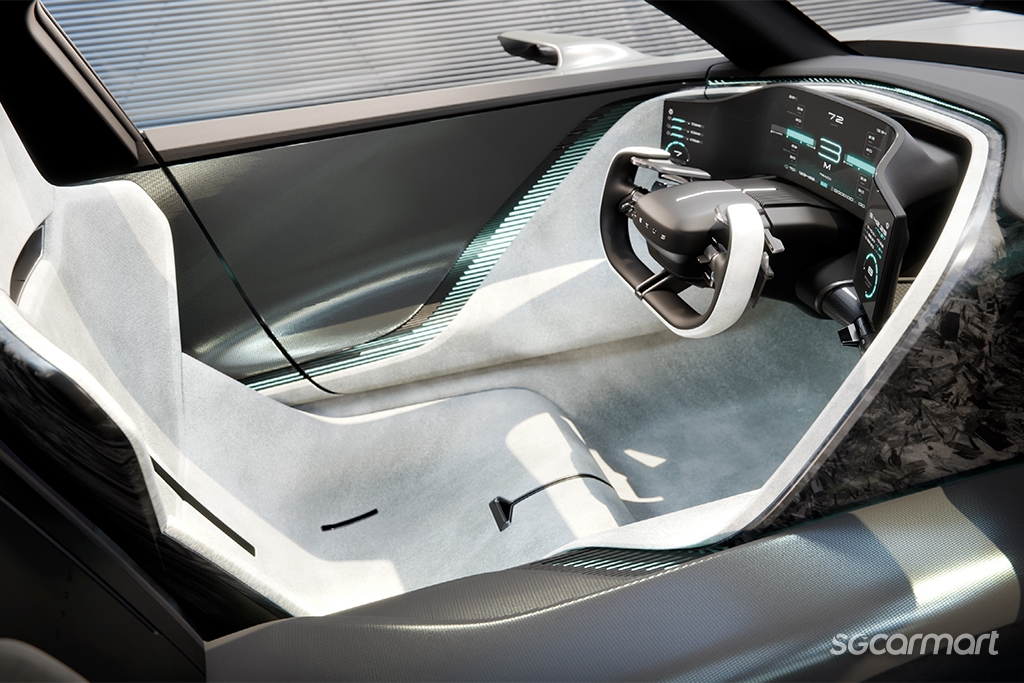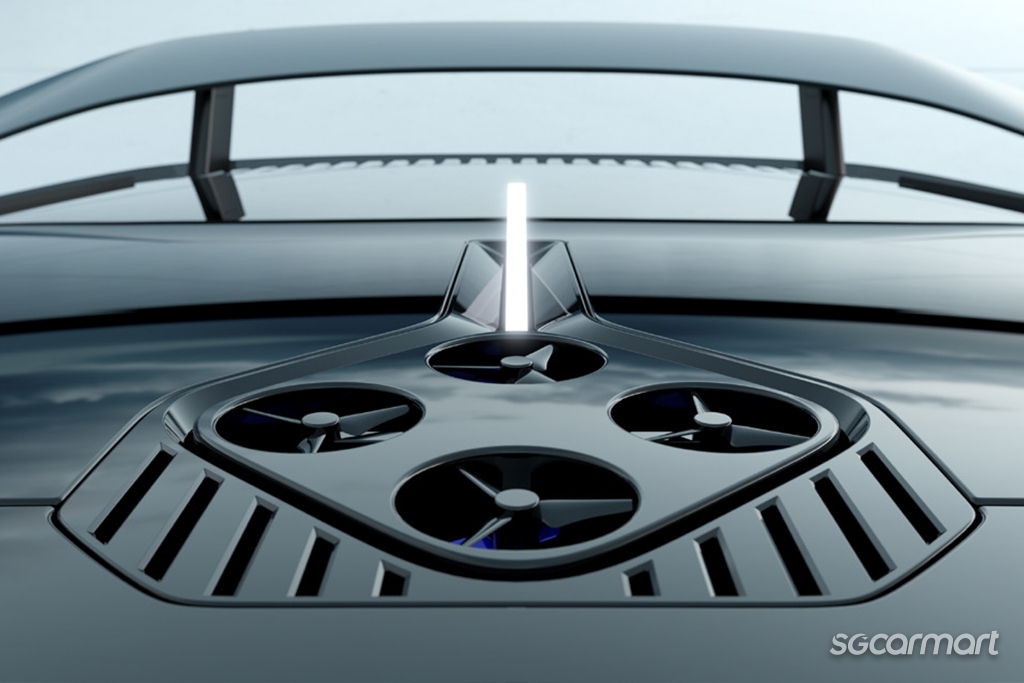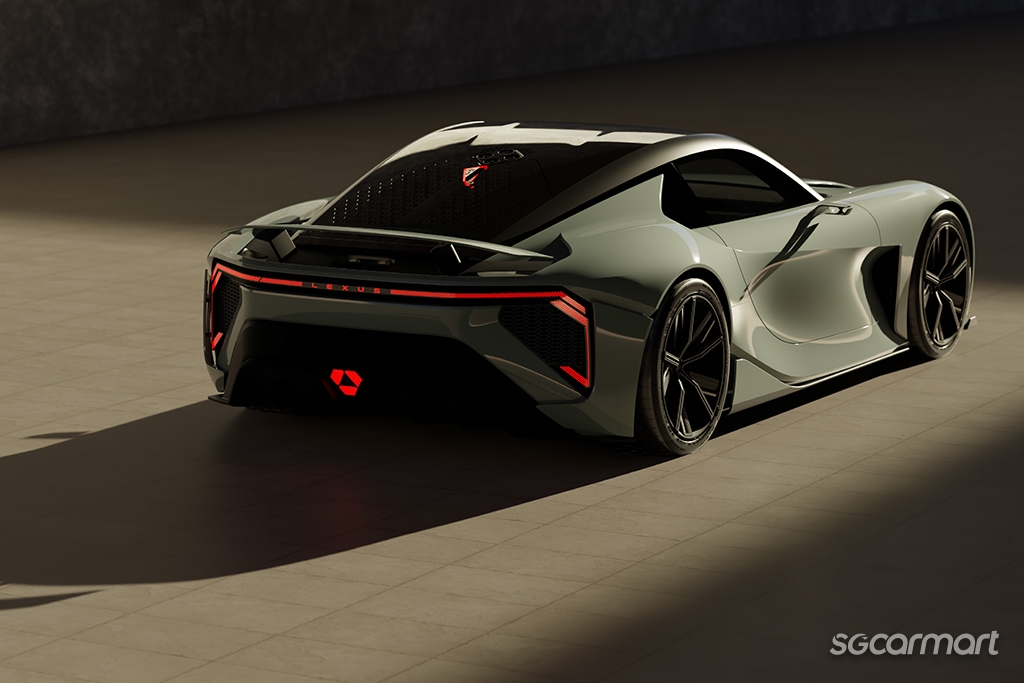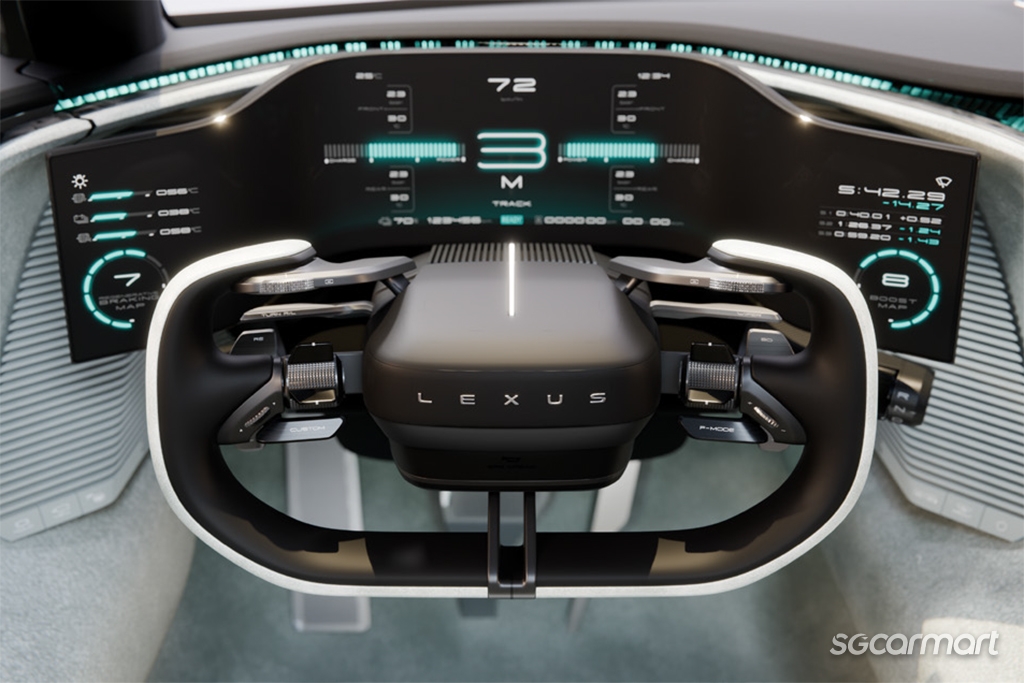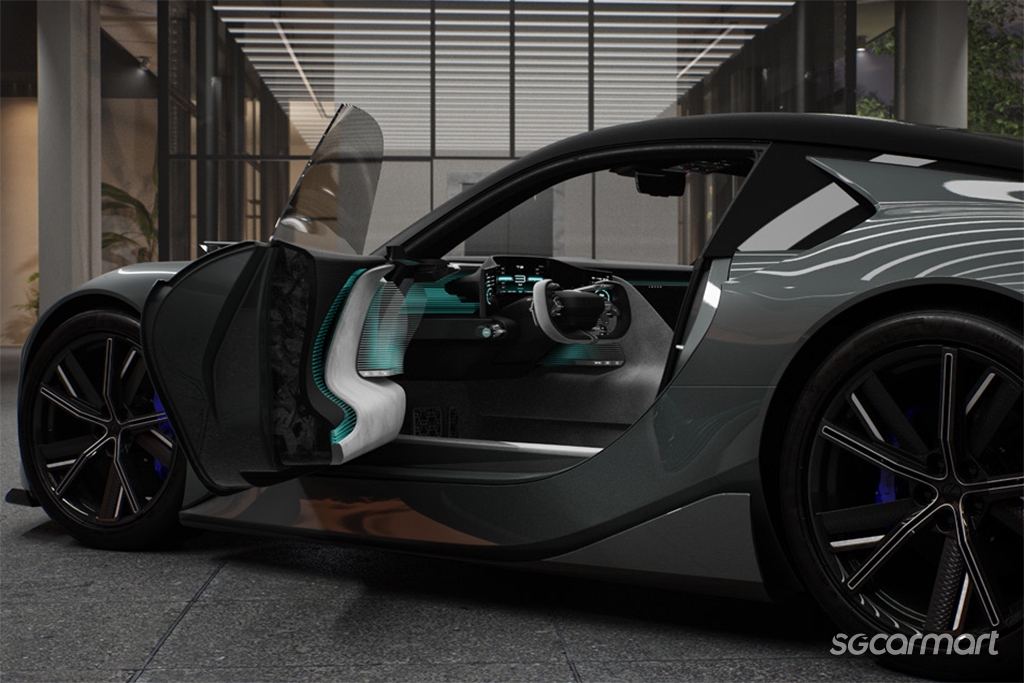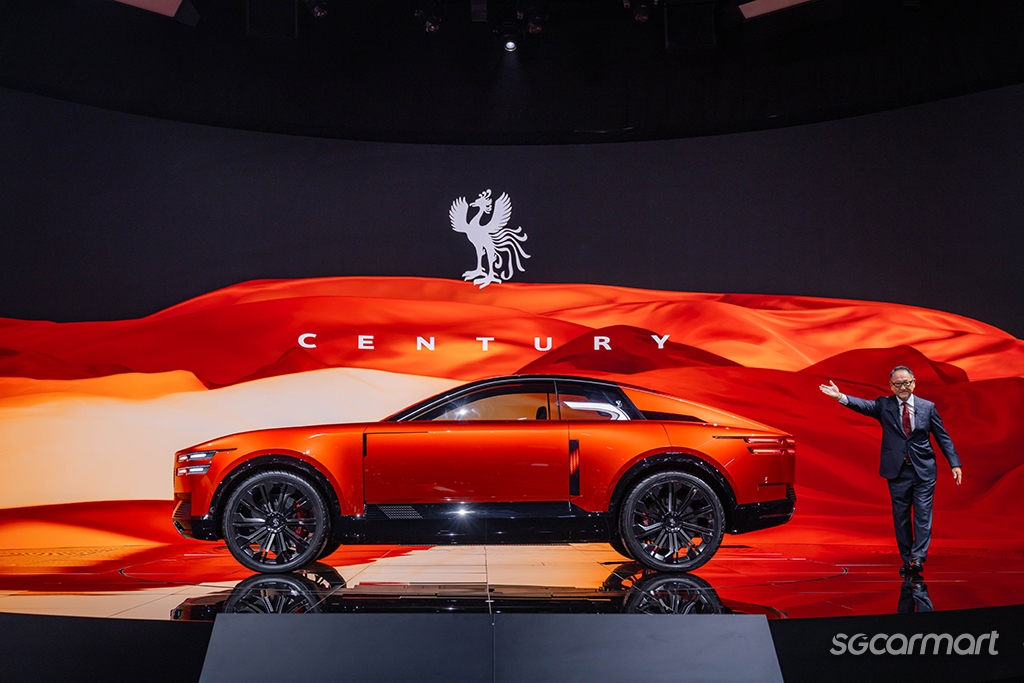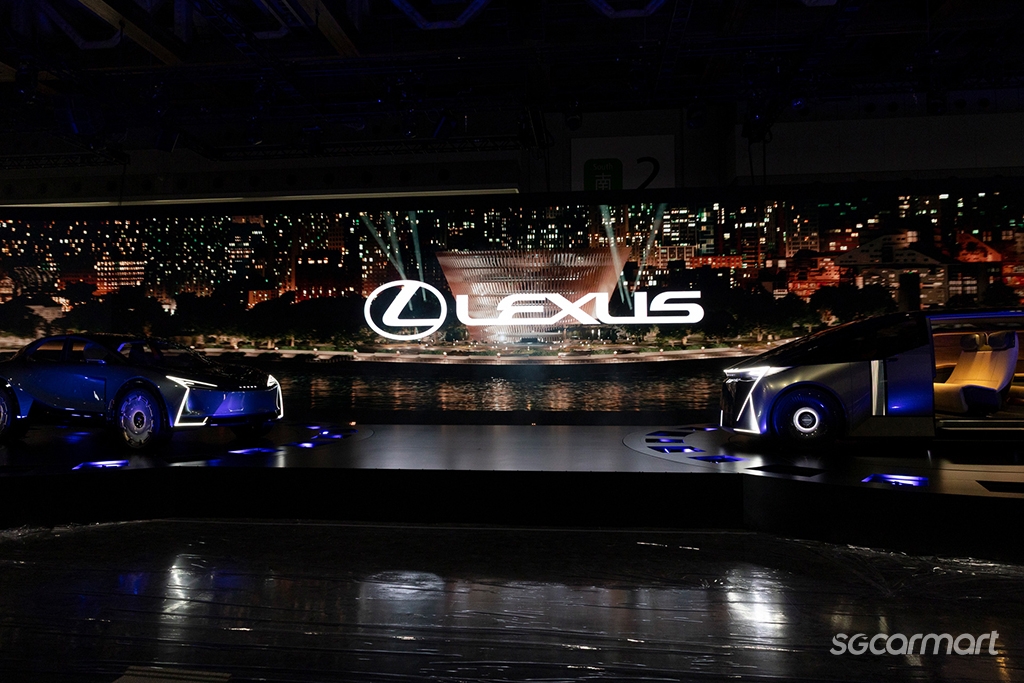The image of a flagship is changing. Lexus is well aware
14 Nov 2025|482 views
Lexus' opening address at the 2025 Japan Mobility Show (JMS) starts with a statement that would probably draw the anguish of car enthusiasts worldwide. It also presents the interminable 'chicken or the egg' dilemma to the automotive world: Do brands dictate what their flagship models are to buyers, or vice versa?
"The rules of the luxury market have changed dramatically. Once upon a time, executive sedans ruled the automotive world," Simon Humphries, Chief Branding Officer at Lexus, noted, before more gravely admitting: "Now, they are fighting a losing battle with SUVs."
Broadly speaking, this reality holds true no matter where one directs their gaze in the auto industry.
Lexus is discontinuing the LS Sedan in the U.S.A after a final run with the limited-edition LS500h Heritage Edition - a sad send-off, considering that the LS Sedan helped to launch the brand there (and in the world) three decades back
But Lexus, in particular, would appear to be most well-acquainted with this sorrowful reality when stacked against its luxury peers.
On the back of dwindling sales, 2025 has thus far seen it discontinue its LS Sedan in two key markets after more than three decades on sale in both: The U.K and the U.S.A. (The latter stings especially; it was on American soil and with the LS Sedan no less that the Lexus brand was launched, even before its home market of Japan.)
Instead of mindlessly mourning this outcome without any action plan, however, the brand has followed up quickly. And to underpin its mission of moving on, it's started at the most fundamental level: Reinterpret what 'LS' means.
"LS… no longer stands for Luxury Sedan, nor Luxury SUV, but rather, for Luxury Space," Humphries shared.
Portal to a new world of luxury
In officially closing the more traditional doors on the three-box shape as the conventional standard for a luxury flagship, Lexus is now seeing fit to open new doors to others. And quite literally too, with extra style and pomp.
The unveiling ceremony of the LS Concept - a sci-fi-esque minivan with an intriguing six-wheel configuration meant to maximise space - saw the covers being yanked off its steely body, before a beam of light traced its spindle-shaped front, flowed rearwards, then illuminated the sills as the passenger-side door slid open.
The LS Concept is a dramatic six-wheeled MPV that aims to maximise space and privacy for its occupants
"The door is really a portal to the interior space. It slides open dramatically; it's framed by light," Ian Cartabiano, President of Calty Design Research (Toyota's North America-based design studio), shares about the LS Concept. "And once you look at that door opening, all of a sudden, this beautifully warm interior that's captivating invites you to come in."
In many ways, this MPV from the future parallels Lexus' invitation into its inner world of understanding luxury for the modern age.
At Tokyo Big Sight, the marque was eager to showcase its idea of a 360-degree vision of mobility, with a multiple-flagship future embedded within.
Six-wheeled LS Concept aside, also taking a stand were the LS Coupe Concept (effectively a sleek coupe-SUV) and the LS Micro Concept (a private luxury lounge on three wheels), both of which are meant to put different spins on the brand's new, broad concept of 'luxury space'.
Speaking about the LS Coupe Concept in particular, Cartabiano notes: "Maybe [the LS Concept] works in Asia, like Tokyo or Shanghai or Manila. It also could work in Europe and America. But some customers want something completely different." He describes the LS Coupe Concept to be a cross between the LS Sedan and LC Coupe.
The LS Coupe Concept (left/above) and LS Micro Concept (right/below) round off the trio of LS Concepts showcased by Lexus at JMS 2025
Even amidst a six-wheeled MPV and a head-turning coupe-SUV, however, it speaks volumes of Lexus' boldness that the LS Micro Concept stands out as the most intriguing of the LS trio still.
"It's a non-automotive shape," Cartabiano points out.
"I told the design team: 'No car styling. We don't want to make something cute. This has to be really cool, like a jewel box.' So this design is all about architecture."
"It reflects the urban environment around it. And the space is to maximise interior volume for the passenger - their luggage and the drive system."
L-series: The idea of a multi-flagship lineup isn't actually new for Lexus or the luxury world (Pictured: LC Convertible and LX SUV)
The concept of a multi-flagship lineup: Not so new after all?
Yet to be clear, Lexus - as with the rest of its contemporaries - has long relinquished the idea of just one flagship.
Its 'L-series' models speak to this reality, with this elite club counting the LM, the LS Sedan, the LC Coupe and Convertible, and the LX SUV as its members (though the latter is not sold in Singapore).
Consider then, that if one peels back the futuristic design elements seen on the concept cars showcased at Tokyo Big Sight, and omit the LS Micro Concept, Lexus' vision for the future becomes a bit less outlandish. It's not that far removed from what it already has to offer.
The success of the Lexus LM as a flagship MPV - still a rather niche segment among the older luxury players - has arguably emboldened it to pursue a broader path forward
While MPVs have not been favoured as greatly for flagship recognition in the post-sedan world, Lexus has already stood apart from its luxury peers for a good few years now.
The LM is already in its second generation, and in current guise, saw an expanded push into more markets. Evidently, market demand for a luxury MPV is already there. (In fact, demand for the Lexus LM has ostensibly already outpaced that of the LS Sedan in Singapore; both remain on sale at the time of writing.) It doesn't feel like a stretch to imagine that its success has given the brand some leeway to be more experimental.
Meanwhile, the LS Coupe Concept effectively allows Lexus to muscle in on an arena it has thus far shied away from: That of the top-end coupe-SUV segment. (This is already filled by the likes of the Audi Q8, BMW X6 and Mercedes-Benz GLE Coupe.) SUVs are good business, no matter their badge - even the ultra-luxe crowd of Rolls-Royce, Bentley, Lamborghini, Aston Martin and Ferrari know this.
Instead of clinging desperately onto the last vestiges of a sunset sedan empire, then, the trio of Luxury Space concepts in Tokyo evince a Lexus that's fully cognisant of shifting consumer demands.
In parallel, Lexus is making its message clear: That it stands as a brand willing to flow along with - rather than stubbornly resist - prevailing market conditions, while still pursuing a vision of luxury faithful to its core brand tenets.
Ultimately not playing by the rules
As such, perhaps the only outlier is an important piece of the flagship puzzle envisioned by Lexus that doesn't bear the 'LS' moniker.
Enter: The Lexus Sport Concept, a low-slung two-seater that - based purely off its extensive aero work and aggressive styling - looks set to be the most performance-oriented Lexus since the LFA.
At the press conference, Humphries explicitly also highlighted the Sport Concept as an integral part of the brand's self-described "flagship series" that would "form an arrowhead to lead the brand into the future".
Lexus has visions of grandeur for the Sport Concept. As with all three LS Concepts, its physical form itself was one of the priorities.
"With a sports car, you should be able to just look at it and feel that it looks great," Cartiabanio proffers. "And if it looks really, really cool, then we did our job as a design team."
Driver-focused, performance-oriented: The Sport Concept boasts a cocoon-like cockpit for the driver, and even a detachable high-speed drone that can help record you out on track so you can improve your lap times
But amidst its breathtaking silhouette, the quality of driver-orientedness stands out strongly alongside an unambiguous performance-focus.
"The interior is all about focusing on the driving experience - involving both driver and passenger - yet giving them two unique spaces. So the driver is wrapped in this beautiful cocoon, with all the controls directly in front... so you can focus on the track ahead," Cartabiano explains. And yes - Lexus reckons you'll want to take the Sport Concept out on track, so the Sport Concept even comes with its own high-speed drone that "launches at speed".
"It follows the car on the track, so it can record your track day, or it can plan the perfect line on the track ahead," Cartabiano shares. "[It will] input that data and then tell you, 'Oh, take this apex; brake here; take this corner.' Your lap times can get better."
No official word has been given about whether this will directly succeed LFA - but Lexus seems well-aware that you're still dreaming vividly about its monster hypercar of the 2010s.
And so, the Sport Concept winks at it in its own way. "If you remember, the LFA had three exhaust tips," Cartiabano reminds us, while pointing towards the Sport Concept's rear end. "We've taken that into the digital era and created a digital signature that pays homage to the LFA, but in a different way."
Funnily enough, the Lexus Sport Concept is the archetype of a thoroughbred performance coupe - which isn't exactly the segment/type of car that you would consider as capable of giving SUVs a thrashing on the sales front. Clearly, then, this isn't just about numbers to Lexus.
Which is why it has its own version of events. Take a step back to consider what the larger Toyota Motor Corporation (TMC) presented in Tokyo, and you'll remember that Lexus is no longer the group's highest-end brand.
That status has now been granted to freshly-independent Century (previously just a model line under Toyota itself), which has been unleashed to explicitly pursue the realms of traditional luxury, and to give the likes of Rolls-Royce and Bentley a run for their money.
Cartabiano reckons that five to 10 years ago, the sorts of concept cars presented by Lexus in Tokyo would not have been possible. But Century's existence now has allowed things to fall into place more neatly.
"I think it helped us a lot as a brand. And it really made the brand separation much more clear. Because Lexus doesn't need to now aspire to the ultra-traditional luxury space," he proffers.
"[Century] being in that space allows us to also move up, but [into] a different zone. A more adventurous and risk-taking zone, where we can try things like a mobility system."
Amidst this remarkably confident multi-flagship vision of the future, there is only one area in which Lexus maintains some ambiguity.
"Long story short, we're open. We're studying lots of different options," Cartabiano replies without missing a beat, when asked about what sort of powertrain will go into each concept car. "We have great BEV technology. We have great PHEV technology... Really, each model could have a different powertrain based on the customer and the customer's choice."
Even in the world of luxury, it seems that Lexus is still crowning the customer as king. Simultaneously, however, its newfound playfulness and inventiveness within the realms of a defined space is also clear to see.
Here are a few other articles that may interest you!
Multi-Pathway approach: Toyota was always right
Lexus' opening address at the 2025 Japan Mobility Show (JMS) starts with a statement that would probably draw the anguish of car enthusiasts worldwide. It also presents the interminable 'chicken or the egg' dilemma to the automotive world: Do brands dictate what their flagship models are to buyers, or vice versa?
"The rules of the luxury market have changed dramatically. Once upon a time, executive sedans ruled the automotive world," Simon Humphries, Chief Branding Officer at Lexus, noted, before more gravely admitting: "Now, they are fighting a losing battle with SUVs."
Broadly speaking, this reality holds true no matter where one directs their gaze in the auto industry.
Lexus is discontinuing the LS Sedan in the U.S.A after a final run with the limited-edition LS500h Heritage Edition - a sad send-off, considering that the LS Sedan helped to launch the brand there (and in the world) three decades back
But Lexus, in particular, would appear to be most well-acquainted with this sorrowful reality when stacked against its luxury peers.
On the back of dwindling sales, 2025 has thus far seen it discontinue its LS Sedan in two key markets after more than three decades on sale in both: The U.K and the U.S.A. (The latter stings especially; it was on American soil and with the LS Sedan no less that the Lexus brand was launched, even before its home market of Japan.)
Instead of mindlessly mourning this outcome without any action plan, however, the brand has followed up quickly. And to underpin its mission of moving on, it's started at the most fundamental level: Reinterpret what 'LS' means.
"LS… no longer stands for Luxury Sedan, nor Luxury SUV, but rather, for Luxury Space," Humphries shared.
Portal to a new world of luxury
In officially closing the more traditional doors on the three-box shape as the conventional standard for a luxury flagship, Lexus is now seeing fit to open new doors to others. And quite literally too, with extra style and pomp.
The unveiling ceremony of the LS Concept - a sci-fi-esque minivan with an intriguing six-wheel configuration meant to maximise space - saw the covers being yanked off its steely body, before a beam of light traced its spindle-shaped front, flowed rearwards, then illuminated the sills as the passenger-side door slid open.
The LS Concept is a dramatic six-wheeled MPV that aims to maximise space and privacy for its occupants
"The door is really a portal to the interior space. It slides open dramatically; it's framed by light," Ian Cartabiano, President of Calty Design Research (Toyota's North America-based design studio), shares about the LS Concept. "And once you look at that door opening, all of a sudden, this beautifully warm interior that's captivating invites you to come in."
In many ways, this MPV from the future parallels Lexus' invitation into its inner world of understanding luxury for the modern age.
At Tokyo Big Sight, the marque was eager to showcase its idea of a 360-degree vision of mobility, with a multiple-flagship future embedded within.
Six-wheeled LS Concept aside, also taking a stand were the LS Coupe Concept (effectively a sleek coupe-SUV) and the LS Micro Concept (a private luxury lounge on three wheels), both of which are meant to put different spins on the brand's new, broad concept of 'luxury space'.
Speaking about the LS Coupe Concept in particular, Cartabiano notes: "Maybe [the LS Concept] works in Asia, like Tokyo or Shanghai or Manila. It also could work in Europe and America. But some customers want something completely different." He describes the LS Coupe Concept to be a cross between the LS Sedan and LC Coupe.
The LS Coupe Concept (left/above) and LS Micro Concept (right/below) round off the trio of LS Concepts showcased by Lexus at JMS 2025
Even amidst a six-wheeled MPV and a head-turning coupe-SUV, however, it speaks volumes of Lexus' boldness that the LS Micro Concept stands out as the most intriguing of the LS trio still.
"It's a non-automotive shape," Cartabiano points out.
"I told the design team: 'No car styling. We don't want to make something cute. This has to be really cool, like a jewel box.' So this design is all about architecture."
"It reflects the urban environment around it. And the space is to maximise interior volume for the passenger - their luggage and the drive system."
L-series: The idea of a multi-flagship lineup isn't actually new for Lexus or the luxury world (Pictured: LC Convertible and LX SUV)
The concept of a multi-flagship lineup: Not so new after all?
Yet to be clear, Lexus - as with the rest of its contemporaries - has long relinquished the idea of just one flagship.
Its 'L-series' models speak to this reality, with this elite club counting the LM, the LS Sedan, the LC Coupe and Convertible, and the LX SUV as its members (though the latter is not sold in Singapore).
Consider then, that if one peels back the futuristic design elements seen on the concept cars showcased at Tokyo Big Sight, and omit the LS Micro Concept, Lexus' vision for the future becomes a bit less outlandish. It's not that far removed from what it already has to offer.
The success of the Lexus LM as a flagship MPV - still a rather niche segment among the older luxury players - has arguably emboldened it to pursue a broader path forward
While MPVs have not been favoured as greatly for flagship recognition in the post-sedan world, Lexus has already stood apart from its luxury peers for a good few years now.
The LM is already in its second generation, and in current guise, saw an expanded push into more markets. Evidently, market demand for a luxury MPV is already there. (In fact, demand for the Lexus LM has ostensibly already outpaced that of the LS Sedan in Singapore; both remain on sale at the time of writing.) It doesn't feel like a stretch to imagine that its success has given the brand some leeway to be more experimental.
Meanwhile, the LS Coupe Concept effectively allows Lexus to muscle in on an arena it has thus far shied away from: That of the top-end coupe-SUV segment. (This is already filled by the likes of the Audi Q8, BMW X6 and Mercedes-Benz GLE Coupe.) SUVs are good business, no matter their badge - even the ultra-luxe crowd of Rolls-Royce, Bentley, Lamborghini, Aston Martin and Ferrari know this.
Instead of clinging desperately onto the last vestiges of a sunset sedan empire, then, the trio of Luxury Space concepts in Tokyo evince a Lexus that's fully cognisant of shifting consumer demands.
In parallel, Lexus is making its message clear: That it stands as a brand willing to flow along with - rather than stubbornly resist - prevailing market conditions, while still pursuing a vision of luxury faithful to its core brand tenets.
Ultimately not playing by the rules
As such, perhaps the only outlier is an important piece of the flagship puzzle envisioned by Lexus that doesn't bear the 'LS' moniker.
Enter: The Lexus Sport Concept, a low-slung two-seater that - based purely off its extensive aero work and aggressive styling - looks set to be the most performance-oriented Lexus since the LFA.
At the press conference, Humphries explicitly also highlighted the Sport Concept as an integral part of the brand's self-described "flagship series" that would "form an arrowhead to lead the brand into the future".
Lexus has visions of grandeur for the Sport Concept. As with all three LS Concepts, its physical form itself was one of the priorities.
"With a sports car, you should be able to just look at it and feel that it looks great," Cartiabanio proffers. "And if it looks really, really cool, then we did our job as a design team."
Driver-focused, performance-oriented: The Sport Concept boasts a cocoon-like cockpit for the driver, and even a detachable high-speed drone that can help record you out on track so you can improve your lap times
But amidst its breathtaking silhouette, the quality of driver-orientedness stands out strongly alongside an unambiguous performance-focus.
"The interior is all about focusing on the driving experience - involving both driver and passenger - yet giving them two unique spaces. So the driver is wrapped in this beautiful cocoon, with all the controls directly in front... so you can focus on the track ahead," Cartabiano explains. And yes - Lexus reckons you'll want to take the Sport Concept out on track, so the Sport Concept even comes with its own high-speed drone that "launches at speed".
"It follows the car on the track, so it can record your track day, or it can plan the perfect line on the track ahead," Cartabiano shares. "[It will] input that data and then tell you, 'Oh, take this apex; brake here; take this corner.' Your lap times can get better."
No official word has been given about whether this will directly succeed LFA - but Lexus seems well-aware that you're still dreaming vividly about its monster hypercar of the 2010s.
And so, the Sport Concept winks at it in its own way. "If you remember, the LFA had three exhaust tips," Cartiabano reminds us, while pointing towards the Sport Concept's rear end. "We've taken that into the digital era and created a digital signature that pays homage to the LFA, but in a different way."
Funnily enough, the Lexus Sport Concept is the archetype of a thoroughbred performance coupe - which isn't exactly the segment/type of car that you would consider as capable of giving SUVs a thrashing on the sales front. Clearly, then, this isn't just about numbers to Lexus.
Which is why it has its own version of events. Take a step back to consider what the larger Toyota Motor Corporation (TMC) presented in Tokyo, and you'll remember that Lexus is no longer the group's highest-end brand.
That status has now been granted to freshly-independent Century (previously just a model line under Toyota itself), which has been unleashed to explicitly pursue the realms of traditional luxury, and to give the likes of Rolls-Royce and Bentley a run for their money.
Cartabiano reckons that five to 10 years ago, the sorts of concept cars presented by Lexus in Tokyo would not have been possible. But Century's existence now has allowed things to fall into place more neatly.
"I think it helped us a lot as a brand. And it really made the brand separation much more clear. Because Lexus doesn't need to now aspire to the ultra-traditional luxury space," he proffers.
"[Century] being in that space allows us to also move up, but [into] a different zone. A more adventurous and risk-taking zone, where we can try things like a mobility system."
Amidst this remarkably confident multi-flagship vision of the future, there is only one area in which Lexus maintains some ambiguity.
"Long story short, we're open. We're studying lots of different options," Cartabiano replies without missing a beat, when asked about what sort of powertrain will go into each concept car. "We have great BEV technology. We have great PHEV technology... Really, each model could have a different powertrain based on the customer and the customer's choice."
Even in the world of luxury, it seems that Lexus is still crowning the customer as king. Simultaneously, however, its newfound playfulness and inventiveness within the realms of a defined space is also clear to see.
Here are a few other articles that may interest you!
Multi-Pathway approach: Toyota was always right
Thank You For Your Subscription.


